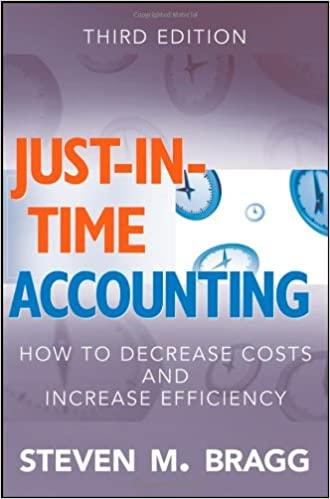Question
Solve the following problem. Determine the following measures for 20Y2 (round to one decimal place, including percentages, except for per-share amounts): 1. Working Capital $
Solve the following problem.
Determine the following measures for 20Y2 (round to one decimal place, including percentages, except for per-share amounts):
| 1. Working Capital | $ |
| 2. Current ratio | |
| 3. Quick ratio | |
| 4. Accounts receivable turnover | |
| 5. Number of days' sales in receivables | |
| 6. Inventory turnover | |
| 7. Number of days sales in inventory | |
| 8. Ratio of fixed assets to long-term liabilities | |
| 9. Ratio of liabilities to stockholders equity | |
| 10. Times interest earned | |
| 11. Asset turnover | |
| 12. Return on total assets | % |
| 13. Return on stockholders equity | % |
| 14. Return on common stockholders equity | % |
| 15. Earnings per share on common stock | $ |
| 16. Price-earnings ratio | |
| 17. Dividends per share of common stock | $ |
| 18. Dividend yield | % |
Solve the following problem.
Measures of liquidity, solvency, and profitability
The comparative financial statements of Marshall Inc. are as follows. The market price of Marshall common stock was $82.60 on December 31, 20Y2.
| Marshall Inc. |
| Comparative Retained Earnings Statement |
| For the Years Ended December 31, 20Y2 and 20Y1 |
| 1 | 20Y2 | 20Y1 | |
| 2 | Retained earnings, January 1 | $3,704,000.00 | $3,264,000.00 |
| 3 | Net income | 600,000.00 | 550,000.00 |
| 4 | Total | $4,304,000.00 | $3,814,000.00 |
| 5 | Dividends: | ||
| 6 | On preferred stock | $10,000.00 | $10,000.00 |
| 7 | On common stock | 100,000.00 | 100,000.00 |
| 8 | Total dividends | $110,000.00 | $110,000.00 |
| 9 | Retained earnings, December 31 | $4,194,000.00 | $3,704,000.00 |
| Marshall Inc. |
| Comparative Income Statement |
| For the Years Ended December 31, 20Y2 and 20Y1 |
| 1 | 20Y2 | 20Y1 | |
| 2 | Sales | $10,850,000.00 | $10,000,000.00 |
| 3 | Cost of goods sold | 6,000,000.00 | 5,450,000.00 |
| 4 | Gross profit | $4,850,000.00 | $4,550,000.00 |
| 5 | Selling expenses | $2,170,000.00 | $2,000,000.00 |
| 6 | Administrative expenses | 1,627,500.00 | 1,500,000.00 |
| 7 | Total operating expenses | $3,797,500.00 | $3,500,000.00 |
| 8 | Income from operations | $1,052,500.00 | $1,050,000.00 |
| 9 | Other income | 99,500.00 | 20,000.00 |
| 10 | $1,152,000.00 | $1,070,000.00 | |
| 11 | Other expense (interest) | 132,000.00 | 120,000.00 |
| 12 | Income before income tax | $1,020,000.00 | $950,000.00 |
| 13 | Income tax expense | 420,000.00 | 400,000.00 |
| 14 | Net income | $600,000.00 | $550,000.00 |
| Marshall Inc. |
| Comparative Balance Sheet |
| December 31, 20Y2 and 20Y1 |
| 1 | 20Y2 | 20Y1 | |
| 2 | Assets | ||
| 3 | Current assets: | ||
| 4 | Cash | $1,050,000.00 | $950,000.00 |
| 5 | Marketable securities | 301,000.00 | 420,000.00 |
| 6 | Accounts receivable (net) | 585,000.00 | 500,000.00 |
| 7 | Inventories | 420,000.00 | 380,000.00 |
| 8 | Prepaid expenses | 108,000.00 | 20,000.00 |
| 9 | Total current assets | $2,464,000.00 | $2,270,000.00 |
| 10 | Long-term investments | 800,000.00 | 800,000.00 |
| 11 | Property, plant, and equipment (net) | 5,760,000.00 | 5,184,000.00 |
| 12 | Total assets | $9,024,000.00 | $8,254,000.00 |
| 13 | Liabilities | ||
| 14 | Current liabilities | $880,000.00 | $800,000.00 |
| 15 | Long-term liabilities: | ||
| 16 | Mortgage note payable, 6%, | $200,000.00 | $0.00 |
| 17 | Bonds payable, 4%, | 3,000,000.00 | 3,000,000.00 |
| 18 | Total long-term liabilities | $3,200,000.00 | $3,000,000.00 |
| 19 | Total liabilities | $4,080,000.00 | $3,800,000.00 |
| 20 | Stockholders Equity | ||
| 21 | Preferred 4% stock, $5 par | $250,000.00 | $250,000.00 |
| 22 | Common stock, $5 par | 500,000.00 | 500,000.00 |
| 23 | Retained earnings | 4,194,000.00 | 3,704,000.00 |
| 24 | Total stockholders equity | $4,944,000.00 | $4,454,000.00 |
| 25 | Total liabilities and stockholders equity | $9,024,000.00 | $8,254,000.00 |
Determine the following measures for 20Y2 (round to one decimal place, including percentages, except for per-share amounts):
| 1. | Working capital |
| 2. | Current ratio |
| 3. | Quick ratio |
| 4. | Accounts receivable turnover |
| 5. | Number of days sales in receivables |
| 6. | Inventory turnover |
| 7. | Number of days sales in inventory |
| 8. | Ratio of fixed assets to long-term liabilities |
| 9. | Ratio of liabilities to stockholders equity |
| 10. | Times interest earned |
| 11. | Asset turnover |
| 12. | Return on total assets |
| 13. | Return on stockholders equity |
| 14. | Return on common stockholders equity |
| 15. | Earnings per share on common stock |
| 16. | Price-earnings ratio |
| 17. | Dividends per share of common stock |
| 18. | Dividend yield
|
Step by Step Solution
There are 3 Steps involved in it
Step: 1

Get Instant Access to Expert-Tailored Solutions
See step-by-step solutions with expert insights and AI powered tools for academic success
Step: 2

Step: 3

Ace Your Homework with AI
Get the answers you need in no time with our AI-driven, step-by-step assistance
Get Started


